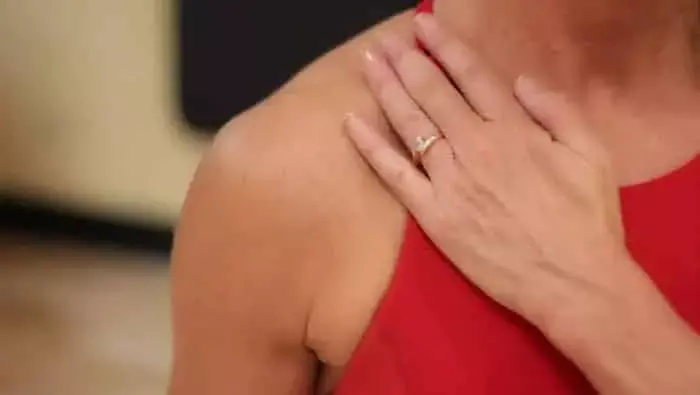- Home
- Medical news & Guidelines
- Anesthesiology
- Cardiology and CTVS
- Critical Care
- Dentistry
- Dermatology
- Diabetes and Endocrinology
- ENT
- Gastroenterology
- Medicine
- Nephrology
- Neurology
- Obstretics-Gynaecology
- Oncology
- Ophthalmology
- Orthopaedics
- Pediatrics-Neonatology
- Psychiatry
- Pulmonology
- Radiology
- Surgery
- Urology
- Laboratory Medicine
- Diet
- Nursing
- Paramedical
- Physiotherapy
- Health news
- Fact Check
- Bone Health Fact Check
- Brain Health Fact Check
- Cancer Related Fact Check
- Child Care Fact Check
- Dental and oral health fact check
- Diabetes and metabolic health fact check
- Diet and Nutrition Fact Check
- Eye and ENT Care Fact Check
- Fitness fact check
- Gut health fact check
- Heart health fact check
- Kidney health fact check
- Medical education fact check
- Men's health fact check
- Respiratory fact check
- Skin and hair care fact check
- Vaccine and Immunization fact check
- Women's health fact check
- AYUSH
- State News
- Andaman and Nicobar Islands
- Andhra Pradesh
- Arunachal Pradesh
- Assam
- Bihar
- Chandigarh
- Chattisgarh
- Dadra and Nagar Haveli
- Daman and Diu
- Delhi
- Goa
- Gujarat
- Haryana
- Himachal Pradesh
- Jammu & Kashmir
- Jharkhand
- Karnataka
- Kerala
- Ladakh
- Lakshadweep
- Madhya Pradesh
- Maharashtra
- Manipur
- Meghalaya
- Mizoram
- Nagaland
- Odisha
- Puducherry
- Punjab
- Rajasthan
- Sikkim
- Tamil Nadu
- Telangana
- Tripura
- Uttar Pradesh
- Uttrakhand
- West Bengal
- Medical Education
- Industry
Operative management of clavicle fractures changed significantly following the COTS RCT publication

In 2007, a randomized controlled trial (RCT) by the Canadian Orthopaedic Trauma Society (COTS) demonstrated better functional outcomes and a lower proportion of patients who developed malunion or nonunion following operative, compared with nonoperative, treatment of midshaft clavicle fractures.
Aresh Sepehri et al conducted a study to compare the proportion of midshaft clavicle fractures treated operatively prior to and following the publication of the COTS RCT. It was conducted at Department of Orthopaedics, Faculty of Medicine, University of British Columbia, Vancouver, British Columbia, Canada. It has been published in ‘JBJS Open Access.’
This retrospective cohort analysis used population-level administrative health data on the residents of British Columbia, Canada. Cases were identified by International Classification of Diseases, Ninth Revision (ICD-9) diagnostic codes and procedure fee codes. Adult patients (>=18 years) with closed middle-third clavicle fractures between 1997 and 2018 were included. Multivariable logistic regression modeling compared the proportion of clavicle fractures treated operatively before and after January 1, 2007, controlling for patient factors. The Pearson chi-square test compared the proportion of fractures treated operatively for malunion or nonunion in the cohorts.
Key findings of the study were:
• A total of 52,916 patients were included (mean age, 47.5 years; 65.6% male).
• The pre-publication cohort included 22,744 patients (15,181 [66.7%] male; mean age, 45.3 years).
• The post-publication cohort included 30,172 patients (19,540 [64.8%] male; mean age, 49.2 years).
• There were significant differences in age and sex (p < 0.001), but no difference in income levels (p = 0.544), between the 2 cohorts.
• More clavicle fractures were treated operatively from 2007 onward: 6.9% compared with 2.2% prior to 2007 (odds ratio [OR] = 3.35, 95% confidence interval [CI] = 3.03 to 3.70, p < 0.001).
• Male sex, moderate-to-high income, and younger age were associated with a greater proportion of operative fixation.
• The rate of surgery for clavicle malunion or nonunion also increased over this time period (to 4.1% from 3.4%, OR = 1.26, 95% CI = 1.15 to 1.38, p < 0.001).
The authors concluded that – “We found a significant change in surgeon practice regarding operative management of clavicle fractures following the COTS RCT publication. These findings are in keeping with orthopaedic surgeons practicing evidence-based medicine. With limited high quality trials comparing operative and nonoperative management, it is important to determine what steps can be taken to increase responsiveness to new clinical studies and guidelines.”
Level of Evidence: Prognostic Level III.
Further reading:
Assessing the Change in Operative Treatment Rates for Acute Midshaft Clavicle Fractures Incorporation of Evidence-Based Surgery Results in Orthopaedic Practice Aresh Sepehri, Pierre Guy et al JBJS Open Access 2023:e22.00096. http://dx.doi.org/10.2106/JBJS.OA.22.00096
MBBS, Dip. Ortho, DNB ortho, MNAMS
Dr Supreeth D R (MBBS, Dip. Ortho, DNB ortho, MNAMS) is a practicing orthopedician with interest in medical research and publishing articles. He completed MBBS from mysore medical college, dip ortho from Trivandrum medical college and sec. DNB from Manipal Hospital, Bengaluru. He has expirence of 7years in the field of orthopedics. He has presented scientific papers & posters in various state, national and international conferences. His interest in writing articles lead the way to join medical dialogues. He can be contacted at editorial@medicaldialogues.in.
Dr Kamal Kant Kohli-MBBS, DTCD- a chest specialist with more than 30 years of practice and a flair for writing clinical articles, Dr Kamal Kant Kohli joined Medical Dialogues as a Chief Editor of Medical News. Besides writing articles, as an editor, he proofreads and verifies all the medical content published on Medical Dialogues including those coming from journals, studies,medical conferences,guidelines etc. Email: drkohli@medicaldialogues.in. Contact no. 011-43720751


